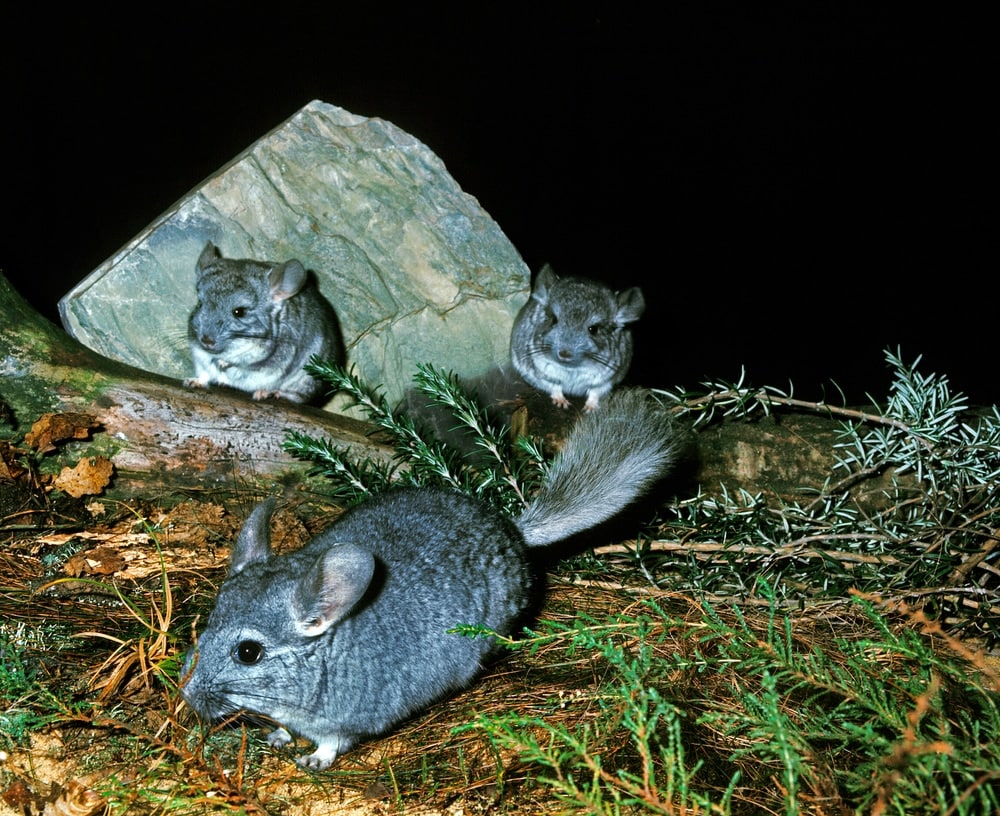
Their hearing range is very similar to that of a human, though their large ears are still a little more sensitive to loud noises than ours are, they do not hear as well as dogs or cats. Heres an example of a chinchilla barking:


Chinchillas also make barking noises to warn others of an impending predatory threat. They bark, chirp, grunt, and squeal.īarking noises tend to indicate that a chinchilla is feeling threatened or afraid. Facts About Chinchilla Behavior Why Do Chinchillas Bark?Ĭhinchillas communicate with each other using a plethora of different sounds to indicate many different emotions. Female chinchillas are monogamous meaning they only have one mate throughout their entire lifespan, whereas male chinchillas have been known to have many mates. Most chinchilla litters only consist of 1 to 2 offspring.įemales are typically the more dominant gender, becoming aggressive towards other female chinchillas and often males as well during mating. Because of the length of the pregnancy, chinchillas are born fully covered in fur, with their eyes open. The gestation period for chinchilla offspring lasts 111 days, which is much longer most animals in the rodent family. Chinchillas have also been known to spray urine on their attackers as a defensive mechanism.Ĭhinchillas can also breed all-year-round, running from November to May in the Northern hemisphere and from November to May in the Southern Hemisphere. Whenever they feel threatened, chinchillas can shed large chunks of their fur, effectively leaving them able to escape their predators. They use their tails to help them balance as they move about their rocky homes.īecause chinchillas are the natural prey of many other animals in the wild, over time they have developed a technique called “fur slip” not to be confused with regular shedding. Chinchillas in the WildĪs very social animals, chinchillas dislike living alone, thus preferring to live in large colonies of about 100. Wild chinchillas make their homes in small holes and rock crevices on the mountains in which they inhabit.Ĭhinchillas have many natural predators, including large birds, snakes, felines, skunks, and canines.ĭue to their natural habitats being rocky, mountainous areas, chinchillas can jump from very high places some even reaching about 6 feet. Due to the locations of their natural habitats they can withstand temperatures of up to 23 degrees Fahrenheit they will, however, suffer from heatstroke and even death in temperatures that reach over 80 Fahrenheit. Wild chinchillas live in places that reach up to 9,800 to 16,400 feet in elevation. The natural habitat of chinchillas is located in the Southern part of South America the Andes mountains to be exact. The oldest on record lived 28 years and 94 days. The lifespan of a chinchilla is typically about ten years in the wild and 15 years when kept in captivity, but many chinchillas have been known to live for up to 20 years. Chinchillas use their long whiskers to “see” and feel things around them which allows them to navigate better. Photo credit: Guérin NicolasĮven though chinchillas have large, round eyes, their eyesight is still very underdeveloped.

Chinchillas have large, rounded ears and eyes placed on either side of their heads. Their fur ranges in a variety of different colors such as gray, beige, tan, black or white. Chinchillas have very dense, soft fur and long bushy tails. The other is named Chinchilla Lanigera this species is the most commonly known and domesticated.Ĭhinchillas closely resemble other rodents like guinea pigs and porcupines chinchillas share the same shortness of forelimbs and longer, thicker back limbs. One named Chinchilla Chinchilla (yes, you say it twice!) which is typically found in the wild this species has a shorter tail and ears and a thicker neck and shoulders. There are currently two different chinchilla species in existence. The average chinchilla size is about 9 to 15 inches in length, but their tails add on another 3 to 6 inches of their overall length size. Chinchillas are typically pretty small, normally weighing in at an average of 1 to 2 pounds.


 0 kommentar(er)
0 kommentar(er)
